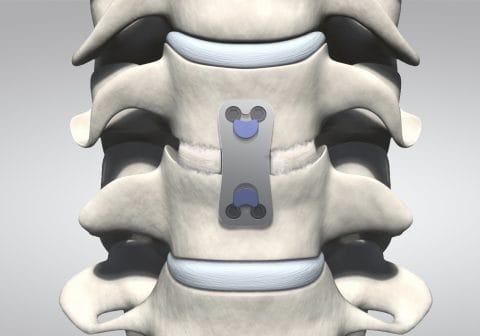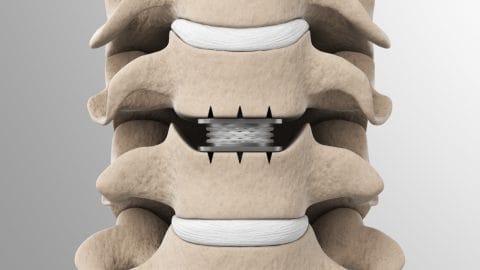For many patients experiencing pain of the neck, shoulders, arms and hands, conservative treatments will help relieve the symptoms of cervical disc degeneration or injury. Your doctor may prescribe physical therapy, rest, painkillers or anti-inflammatory medications. If this first line of treatment fails and your neck pain persists, then your doctor may suggest surgical options:
- Anterior Cervical Discectomy and Fusion (ACDF) or spinal fusion is a surgical procedure where the damaged spinal disc is removed to reduce spinal cord and/or nerve pressure. Following disc removal, the cervical vertebrae on either side of the disc space are joined together in a process called spinal fusion.
- Artificial Cervical Disc Replacement is a surgical procedure that involves removing the damaged spinal disc to relieve symptoms of pain, weakness, numbness and tingling in the neck, shoulders, arms and hands. Following the removal of the cervical disc and any bony materials compressing or pinching the spinal cord and/or nerves, an artificial disc is implanted in its place. This implant is designed to restore proper spacing between the vertebrae, relieve pressure on the spinal cord or nerves, and preserve motion at the treated level.

